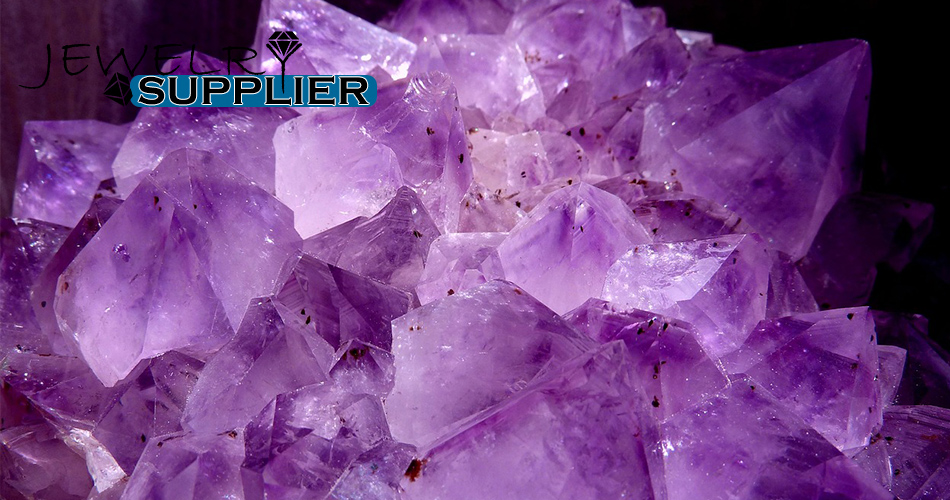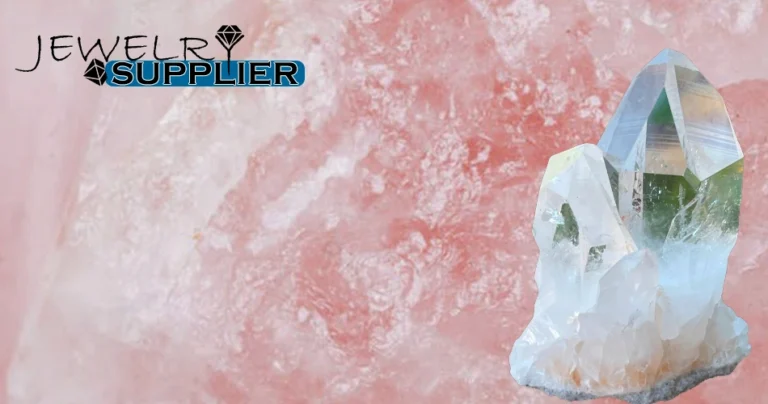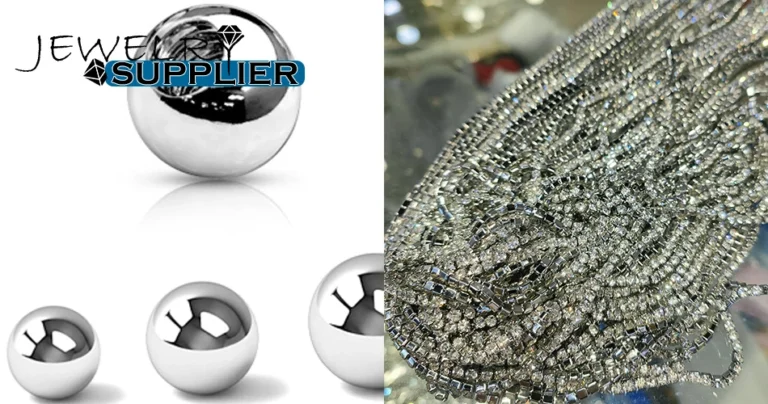Crystal: Nature’s Elegant Mineral
Crystal is a mineral primarily composed of silicon dioxide (SiO2) and is celebrated for its high hardness and dazzling variety of colors. This versatile material can be obtained through either natural mining or sophisticated synthetic processes. Its internal structure consists of silicon and oxygen atoms linked by covalent bonds, forming a three-dimensional network with three mutually perpendicular symmetry axes. This crystalline structure gives crystal its impressive cohesion, contributing to its renowned hardness and resistance to scratches or surface wear – perfect for creating long-lasting, eye-catching jewelry.
However, in certain environmental conditions, the hardness of crystal can be compromised by specific chemicals, which may weaken its surface integrity and expose it to damage. Despite this, crystal’s unique durability and aesthetic appeal make it a coveted choice in high-end jewelry design. It’s worth noting that crystal exhibits dichroism, where different trace elements incorporated during its formation can give rise to various hues. For instance, iron may lend a yellow tint, while chromium can impart shades of green.
Additionally, other external factors, such as temperature and exposure to light, can subtly alter a crystal’s color over time. This phenomenon makes each crystal piece inherently unique, adding to its allure as a statement piece in fine jewelry. Whether showcased as vibrant pendants, exquisite earrings, or intricate inlays, crystal remains a timeless material that blends sophistication with natural beauty, appealing to those who appreciate both style and science in their accessories.
The Raw Materials of Crystal
The raw materials for crystal are primarily sourced through two methods: natural mining and synthetic production. Natural crystal is typically extracted from specific mineral deposits found in volcanic, metamorphic, and sedimentary rocks. These deposits are often rich in high-quality silicon dioxide, making them ideal for harvesting pristine crystal formations. In contrast, synthetic crystal is produced in laboratories using advanced techniques like chemical vapor deposition (CVD) or the melt-growth method. These controlled environments allow for precise manipulation of the growth conditions, enabling the creation of crystals with specialized attributes.
The purity of the raw silicon dioxide is critical to determining the quality and potential applications of the final crystal product. High-purity SiO2 can yield colorless, transparent crystals, whereas the presence of trace impurities can lead to a stunning array of colored crystals, such as amethyst (purple) or citrine (yellow). Moreover, the type and concentration of these impurities significantly influence the crystal’s physical properties, including its refractive index, hardness, and thermal conductivity.
Whether sourced naturally or synthesized in a lab, the unique composition of each crystal makes it an exquisite material for both fine jewelry and functional applications. High-grade crystal not only offers unmatched clarity and brilliance but also showcases the interplay between nature’s artistry and scientific precision. From delicate pendants to bold statement pieces, crystal remains an iconic symbol of elegance and innovation in the world of jewelry design.
Crystal Structure of Crystals
The internal structure of a crystal is defined by a precise arrangement of silicon and oxygen atoms bonded together in specific proportions and patterns. In the microstructure of a crystal, each silicon atom is covalently bonded to four oxygen atoms to form a unique tetrahedral unit. These tetrahedra are then interconnected by shared oxygen atoms to form a continuous three-dimensional network, giving the crystal a strong and cohesive structure.
Crystals belong to the trigonal system, which is characterized by three mutually perpendicular axes of symmetry. This unique structural arrangement leads to a diversity of geometric shapes found in natural crystals. Typical formations include hexagonal prisms, hexagonal bipyramids, and aggregates of prisms and bipyramids. These shapes are influenced by geological conditions and the growth environment, resulting in a wide variety of natural crystals.
Whether shaped by natural forces or created in a laboratory, the crystal structure of a crystal determines not only its aesthetic appeal, but also its durability and optical properties, making it a valuable material in both fashion and science.
Hardness of crystal
The hardness of crystal is closely related to its internal crystal structure. In the crystal lattice of crystal, silicon atoms and oxygen atoms are connected to each other by strong covalent bonds to form a strong three-dimensional network. This unique arrangement provides crystal with extraordinary cohesion, resulting in high hardness. While this special hardness helps maintain the appearance of crystal, special care is required during maintenance.
When cleaning crystal jewelry, it is important to avoid using hard brushes or abrasive cleaners, as they can cause scratches. In addition, due to the inherent brittleness of crystal, it is important to avoid severe impact or drops. Although crystal is very hard, it is still susceptible to certain corrosive substances, such as hydrofluoric acid. Hydrofluoric acid reacts with silica and causes damage to the surface of crystal.
Therefore, under certain circumstances, the hardness of crystal may not fully protect it from damage. Proper handling and cleaning techniques are essential to maintain the beauty and integrity of crystal jewelry, ensuring that they can maintain their shining color for a long time.
Crystal Jewelry Processing Techniques
Dichroism of Crystals
Dichroism of crystals refers to the phenomenon that certain colored crystals display two different colors when viewed under polarized light. This phenomenon occurs due to the variation of the refractive index of the crystal’s internal structure in different directions. Dichroism is an important feature in gemology that helps distinguish between various gem types.
1. The dichroism of a crystal is affected by trace elements in its growth process, which form color centers that absorb specific colors in the visible spectrum while reflecting other colors. For example, manganese-containing crystals appear purple, iron-containing crystals appear yellow, and copper-rich crystals appear blue hues.
2. In gemology, the dichroism of a crystal is an important identification feature that can be observed using a specialized dichroic mirror. This instrument is used to detect the dichroism of a gemstone, showing two different colors displayed along the two main vibration directions. If the crystal has dichroism, rotating the dichroic instrument will cause the colors in the two windows to interchange; if it lacks dichroism, the colors in the two windows will remain consistent.
3. The dichroism of a crystal is affected by various factors, including light, temperature, pressure, and chemicals. Under certain conditions, the color of a crystal can even change irreversibly; for example, amethyst will gradually fade in sunlight. Therefore, when wearing or using a crystal with dichroic properties, it is recommended to avoid extreme conditions in order to preserve its color and optical properties.
Data sheet of commonly used raw materials for jewelry
The Impact of Crystal Hardness on Jewelry
The hardness of crystal is a crucial factor to consider when it comes to jewelry. With a Mohs hardness of 7, crystal is categorized as a relatively hard material among gemstones, although it remains softer than diamonds, rubies, and sapphires. The hardness of crystal influences jewelry in several significant ways:
1. Scratch Resistance: The high hardness of crystal means it is less likely to get scratched or worn down during daily wear, allowing it to maintain its beauty and luster over a longer period.
2. Care and Maintenance: Despite its considerable hardness, care should still be taken to avoid contact with harder objects. When storing crystal jewelry, it’s best to keep it separate from other pieces to prevent scratching.
3. Cleaning Methods: When cleaning crystal, use soft cloths and gentle cleaning agents. Avoid hard-bristle brushes or abrasive cleaners that could scratch the surface of the crystal.
4. Jewelry Design: The hardness of crystal also impacts its application in jewelry design. Its durability allows crystal to be cut into various shapes without risking damage, thereby enhancing the diversity of design options.
Types of Crystal
Crystal is a variety of quartz that comes in numerous types, each showcasing its own unique colors, patterns, and hues.
1. Green Tourmaline: This natural needle-like inclusion crystal typically appears transparent or semi-transparent, featuring a delicate internal structure and a warm color that offers high aesthetic value. It’s commonly used in jewelry designs, such as pendants, earrings, and bracelets.
2. Ametrine: Ametrine is a unique gemstone formed by the natural fusion of amethyst and citrine or through heat treatment. Its most notable characteristic is the display of purple and yellow hues within the same crystal, often with both colors present in equal parts or gradually transitioning. This striking color combination makes it highly sought after in jewelry design.
3. Citrine: Citrine is a variety of quartz with colors ranging from light yellow to deep brown. The formation of this hue is due to the presence of trace amounts of iron oxide. Its crystal structure belongs to the orthorhombic system, and the crystals typically exhibit prismatic shapes with vertical striations. Citrine possesses a glassy luster, and under varying UV light conditions, it can show different fluorescence.
4. Amethyst: Amethyst is the only purple variety in the crystal family, with colors ranging from light lavender to deep violet, sometimes nearing a violet hue. Natural amethyst often contains inclusions of gas-liquid bubbles, cracks, or other minerals, making these internal features essential for authenticating the stone. Its durable nature makes it perfect for jewelry suited for everyday wear and long-term use.
5. Phantom Quartz: Also known as phantom crystal or ghost crystal, it contains various mineral inclusions like chlorite or volcanic ash, creating unique patterns resembling clouds, seaweed, swirls, or pyramids, lending an air of mystery and visual impact.
6. Rose Quartz: Commonly referred to as the “love stone,” rose quartz primarily consists of silicon dioxide, featuring a soft and warm pink color that can range from pale to deep pink. Due to its relatively brittle texture, it’s essential to avoid impacts and prolonged exposure to high temperatures to prevent damage or discoloration.
7. Smoky Quartz: Smoky quartz, also known as smoky crystal, features colors ranging from light brown to deep brown, presenting a warm and soft tone. Its earthy hues add a unique aesthetic appeal to various jewelry designs.
8. Clear Quartz: Typically completely colorless, clear quartz may display slight gray or blue tints, appearing entirely transparent. Some pieces may appear slightly cloudy or milky, depending on the tiny inclusions or cracks present. Due to its durability, clear quartz is not only used in jewelry supplier‘s jewelry but also in the production of eyewear, industrial applications, carvings, and decorative arts.
9. Titanium Quartz: Also known as rutilated crystal, this variety belongs to the trigonal system. The primary base of titanium quartz is clear quartz or smoky quartz, containing mineral inclusions of rutile (TiO2). The densely packed rutile fibers within create striking patterns resembling plates or cat’s eyes, showcasing high ornamental value.
10. Strawberry Quartz: Known for its resemblance to strawberries, strawberry quartz is primarily composed of silicon dioxide and exhibits shades of red, deep red, or pink. It may sometimes feature hints of blue, orange, or green. The surface has a high luster and transparency, with iron oxide inclusions that reflect and refract light, creating unique visual effects.
11. Water Bubble Quartz: Water bubble quartz is a high-temperature crystal (β-quartz) that forms at temperatures above 579°C. The rapid growth of these crystals occurs when hydrothermal solutions become trapped within the crystal structure. Due to the presence of internal droplets or bubbles, water bubble quartz is highly regarded for its aesthetic appeal, typically measuring 1-5 centimeters in size. These crystals can be transparent or semi-transparent, showcasing a unique blue tint ranging from light to deep blue.






